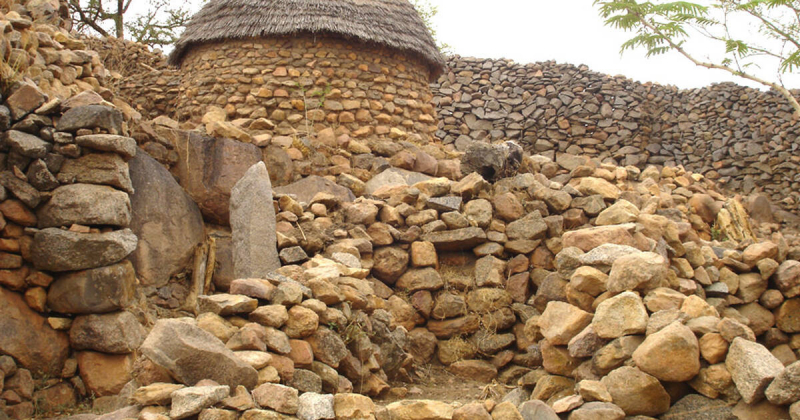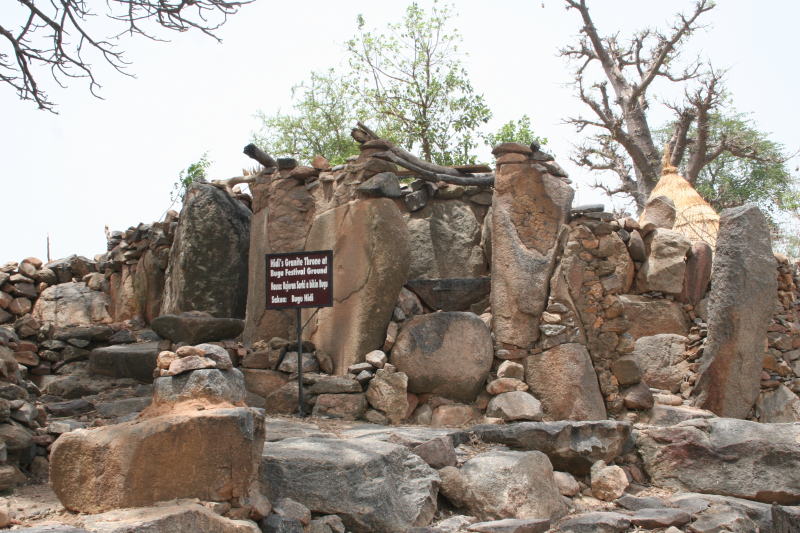Sukur Cultural Landscape
Sukur, also known as the Sukur Cultural Landscape, is a UNESCO World Heritage Site located on a hill above the settlement of Sukur in Nigeria's Adamawa State. It is located in the Mandara Mountains, close to the Cameroonian border. Its UNESCO listing is based on cultural heritage, material culture, and naturally terraced fields. Sukur is Africa's first cultural landscape to be included on the World Heritage List.
Iron Age remains discovered at the site in the form of furnaces, ore, and grindstones have been proven to be pre-Sukur. There are also some neolithic discoveries. The most recent history can be traced back to the 17th century Dur dynasty. The Dur established the region as a key provider of raw materials for iron manufacturing to northeastern Nigeria, a position it held until the first decade of the twentieth century. Sukur was devastated by the raids of Hamman Yaje, the Fulbe Lamido (chief) of Madagali, from 1912 to 1922. These wars caused a drop in iron smelting until 1960 when people began to migrate to the plains to the north and south of Sukur. The British colonization of the region, which began in 1927, had no effect on the cultural styles of this colony.
Its inscription by UNESCO in 1999 was based on the cultural legacy of the Hidi's Palace complex and town, material culture, and the natural terraced fields, which are still in good shape. Sukur's cultural landscape bears eloquent witness to a strong and enduring cultural history that has lasted for generations. Sukur is one of two UNESCO World Heritage Sites in the country.
Location: Madagali, Nigeria













